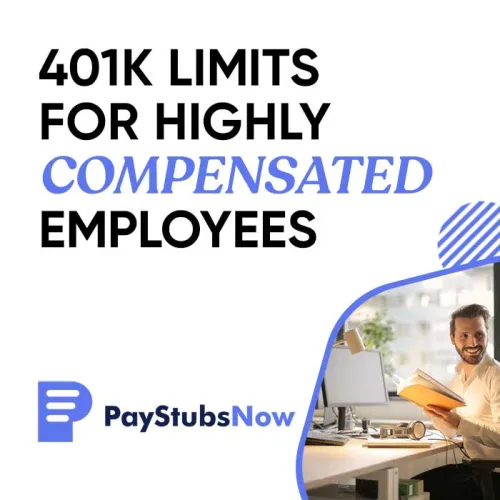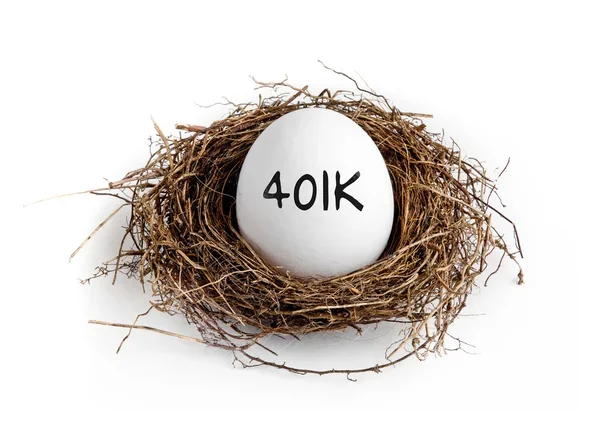


Saving for retirement savings plans has always been a crucial aspect of employment that workers look forward to. And you probably have felt pretty satisfied with your retirement savings because of the 401k limits. As a result, the tax deferral of this type of retirement savings makes it so attractive.
401 k contribution limits are the maximum gross income amount that an employee can move over to their retirement account. In addition, there are two tax qualified status types of 401k plans: traditional or Roth, both offering unique tax free benefits. This article discusses the 401k limits for highly compensated employees, detailing what a 401k is and its relevance.
To find out more about these limits, especially in 2021, keep reading.High contribution limits are one of the features that make tax-deferred retirement accounts like 401k limits plans so appealing. This becomes even more tempting if your company provides a 401k employer match.

Some plans, however, place a contribution limit on highly compensated employees (HCEs), restricting them from making the maximum employee contributions. Nonetheless, you can sidestep these contribution limit constraints and increase your total contributions to retirement funds.
But first, determine your employer to establish whether you are a key employee. Consider engaging with a financial advisor for assistance with retirement account savings and planning.
A 401k is a savings plan for retirement that an employer sponsors. Essentially, the workers or employees either save or invest part of their paycheck before taxes are taken out. It offers employees a tax free benefit, where the tax year of after tax contributions influences the tax break.
The pre-tax deductions for contribution into the 401k account are usually for investment. Examples of such investments include stocks, bonds, mutual funds, etc., depending on the employee's choice.

The real benefit of a 401k is the tax free benefit or tax break from annual limits. The reason for the tax break is because the contribution or deduction is usually before taxation. As a result, the final taxation is usually when you withdraw it at retirement. The earliest age for retirement should be 59 years at least.
Additionally, your employer contributions to the 401k are not regarded as actual compensation. Therefore, your tax bill will be smaller. And your savings can increase gradually with deferred taxation. It means that your money grows free of taxation and has the quality of growing progressively.
The internal revenue service defines highly compensated employees as those who fulfill the following:
The IRS defines a highly compensated employee as someone who fits one of the two criteria listed below:
Compensation is more than just the recurring salary you receive from your company. Overtime, bonuses, commissions, and salary deferrals to cafeteria plans and 401k limits are all included.
According to the IRS, your company may designate you as an HCE if you are among the top 20% of employees in terms of compensation.That 5% guideline can also be a little ambiguous.
It is based on the value of the company's stock. However, it is not limited to what you own. It also includes the ownership of your spouse, children, and grandchildren who work for the same company. So, if your stake in the company is worth 3% and your son owns 2.2%, you are classified as an HCE. This is because your overall ownership is 5.2%.

Some 401k plans come with limits for highly compensated employees. However, for employers with a safe Harbour 401k plan, this rule might not apply to you as a high earner.
Typically, high earners among highly compensated employees can contribute no more than 2% more of their salary to their 401(k) than the average NHCE contributions.
That means if the average non-HCE employee is contributing 10% of their salary, an HCE 401k limit will be a maximum of 12% contribution. In addition to the federal limit, your company may have specific caps established to remain compliant.
Before we get into how restrictions can apply to you, let's go through the maximum 401k contribution requirements that apply to everyone. A single 401k limited participant can contribute up to $22,500 in 2023. A 401k participant filing a single tax return in 2022 may contribute up to $20,500.
If you are above the age of 50, you can make an additional $7,500 in "catch up contributions ($6,500 in 2022). When you consider an employer match, you could be looking at significant tax breaks. Many employers undertake nondiscrimination tests on the 401k plans they sponsor each calendar year.
These are required by the IRS to ensure that plans do not favor HCEs over the rest of the organization. To pass the criteria, HCEs' average contributions must be more than two percentage points more than non-highly compensated employees' average contributions.
So, if the average contribution made by non-HCEs is 4% of their wages, the average contribution made by HCEs cannot exceed 6% of their incomes.Furthermore, total HCE contributions cannot exceed total non-HCE contributions by more than 2%. As you can see, how much you should contribute to your 401k limits is greatly influenced by how much non-HCEs contribute and how many participate at all.

There are several ways you can maximize your 401k retirement savings. Here are a few tips for average earners and highly compensated employees.

Companies have until March 15 to complete the previous year's test. As a result, if you were an HCE who maxed out your contributions the previous year, you might not know if the company failed the test until the following year.
If plan fails, your related employer will almost certainly repay you the excess contributions you made. This will be taxable income. As a result, it may increase your tax liability for the current year. Furthermore, the money returned diminishes the tax savings and returns potential of your 401k limits.
As a result, you may wish to set aside some funds to cover a future tax increase. You can also pay an estimated tax payment. And, in some cases, deferring reaching your 401k limits contribution until you know whether you will face restrictions is a good idea.
Paystubsnow is your one-stop financial solution for different employers, startups, and employees, managing plan assets and employer matching efficiently. You can create invoices for free with the click of a few buttons for clients, create paystubs for employees with ease, create 1099 , and W-2 forms. All of the services you will need to make the most of your retirement savings.